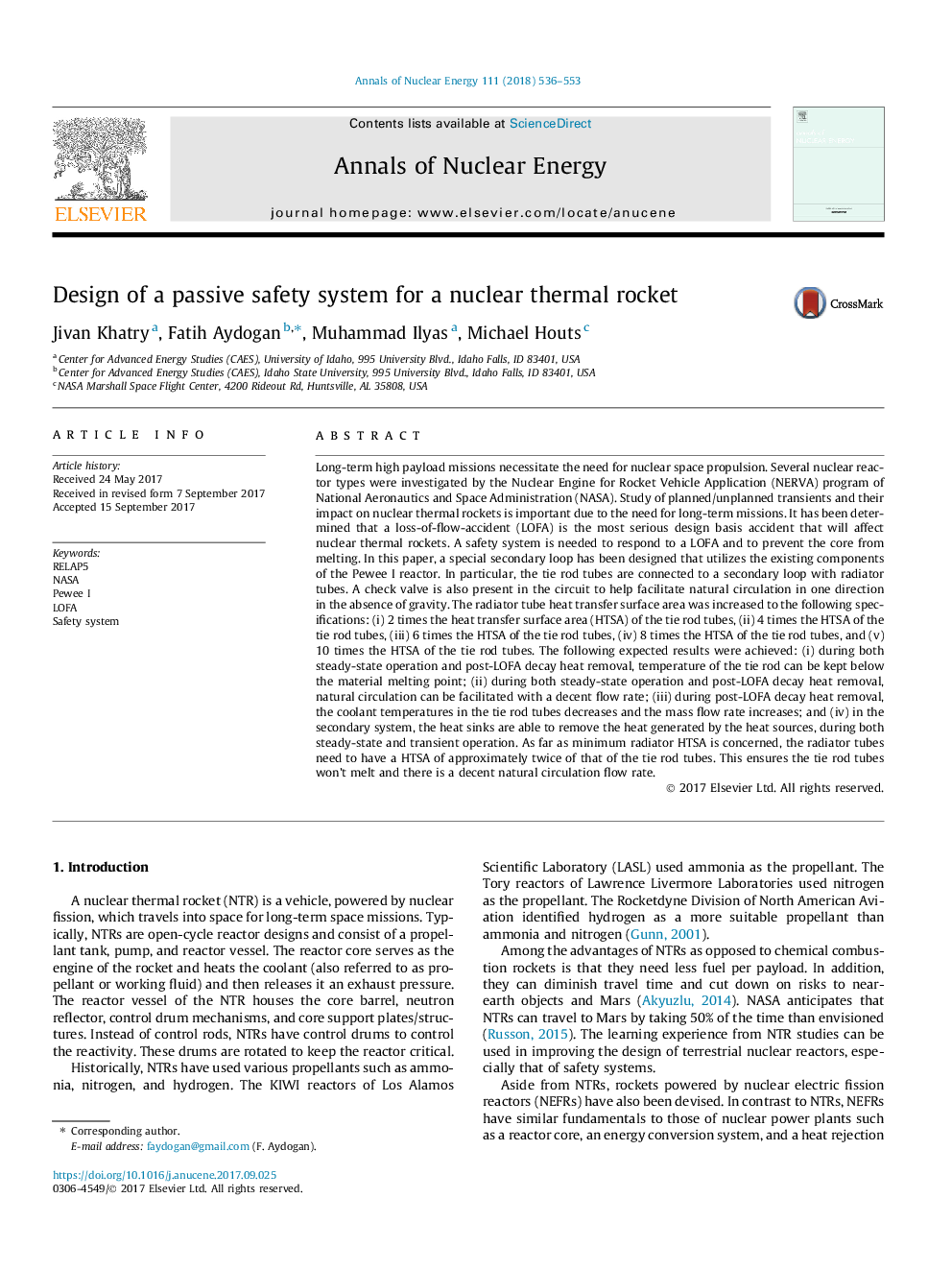| کد مقاله | کد نشریه | سال انتشار | مقاله انگلیسی | نسخه تمام متن |
|---|---|---|---|---|
| 5474824 | 1521085 | 2018 | 18 صفحه PDF | دانلود رایگان |
عنوان انگلیسی مقاله ISI
Design of a passive safety system for a nuclear thermal rocket
ترجمه فارسی عنوان
طراحی یک سیستم ایمنی منفعل برای موشک های هسته ای
دانلود مقاله + سفارش ترجمه
دانلود مقاله ISI انگلیسی
رایگان برای ایرانیان
کلمات کلیدی
موضوعات مرتبط
مهندسی و علوم پایه
مهندسی انرژی
مهندسی انرژی و فناوری های برق
چکیده انگلیسی
Long-term high payload missions necessitate the need for nuclear space propulsion. Several nuclear reactor types were investigated by the Nuclear Engine for Rocket Vehicle Application (NERVA) program of National Aeronautics and Space Administration (NASA). Study of planned/unplanned transients and their impact on nuclear thermal rockets is important due to the need for long-term missions. It has been determined that a loss-of-flow-accident (LOFA) is the most serious design basis accident that will affect nuclear thermal rockets. A safety system is needed to respond to a LOFA and to prevent the core from melting. In this paper, a special secondary loop has been designed that utilizes the existing components of the Pewee I reactor. In particular, the tie rod tubes are connected to a secondary loop with radiator tubes. A check valve is also present in the circuit to help facilitate natural circulation in one direction in the absence of gravity. The radiator tube heat transfer surface area was increased to the following specifications: (i) 2 times the heat transfer surface area (HTSA) of the tie rod tubes, (ii) 4 times the HTSA of the tie rod tubes, (iii) 6 times the HTSA of the tie rod tubes, (iv) 8 times the HTSA of the tie rod tubes, and (v) 10 times the HTSA of the tie rod tubes. The following expected results were achieved: (i) during both steady-state operation and post-LOFA decay heat removal, temperature of the tie rod can be kept below the material melting point; (ii) during both steady-state operation and post-LOFA decay heat removal, natural circulation can be facilitated with a decent flow rate; (iii) during post-LOFA decay heat removal, the coolant temperatures in the tie rod tubes decreases and the mass flow rate increases; and (iv) in the secondary system, the heat sinks are able to remove the heat generated by the heat sources, during both steady-state and transient operation. As far as minimum radiator HTSA is concerned, the radiator tubes need to have a HTSA of approximately twice of that of the tie rod tubes. This ensures the tie rod tubes won't melt and there is a decent natural circulation flow rate.
ناشر
Database: Elsevier - ScienceDirect (ساینس دایرکت)
Journal: Annals of Nuclear Energy - Volume 111, January 2018, Pages 536-553
Journal: Annals of Nuclear Energy - Volume 111, January 2018, Pages 536-553
نویسندگان
Jivan Khatry, Fatih Aydogan, Muhammad Ilyas, Michael Houts,
